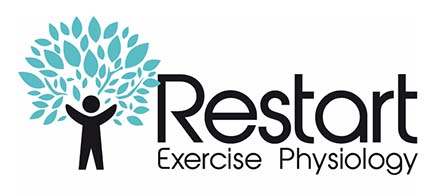Improving grip strength is a by-product of regular resistance training. Your body is a reactor to its environment – do enough of a particular activity and you will adapt to become stronger and more efficient at that task. Lifting and carrying heavier objects will naturally promote stronger fingers, hands, wrists and forearms. Pretty simple concept right.
But did you know that grip strength also correlates closely with a variety of important markers for desirable health and well-being. Additionally, studies show that having poor grip strength can increase your risk of a variety of debilitating chronic diseases!
Loss of grip-strength is also a well-recognised manifestation of age-related motor decline and geriatric syndromes such as sarcopenia (loss of muscle mass that occurs with ageing/immobility) and frailty (2).
When it comes to grip strength, perhaps the ultimate show of strength is cracking open that stubborn gherkin jar that’s just defeated your family members. I personally enjoy the feeling of being the one to hear that rewarding ‘pop’, indicating the seal has been broken and my hard work at the gym has paid off in a very tangible and helpful way. I am then hoisted upon the shoulders by all in company, paraded down the street with open gherkin jar raised aloft!
Gherkin jars and imaginary celebrations aside, here are four reason why improving grip strength goes beyond opening jars.
All-cause mortality
A study by Leong and colleagues published in The Lancet in 2015 shared the outcomes of a 6-year study involving 139,691 people. The study showed that grip strength was inversely associated with all-cause mortality (death due to any cause), cardiovascular disease, myocardial infarction (commonly known as a heart attack) and stroke. In lay terms, the lower your grip strength, the greater your risk of the above. Pretty startling right?!
Cognitive decline
Loss of grip strength and cognitive impairment are prevalent in the elderly, and they may share similar origins (2). A 2021 study by Cui et al performed a systematic review of 15 studies that investigated the possible connection between grip strength and cognitive decline.
They discovered that poorer grip strength was associated with greater risk of cognitive decline and dementia. Further analysis showed that people with lesser grip strength had more risk of Alzheimer’s disease and non-Alzheimer’s disease dementia.
Hip fracture risk
Hip fractures are a global concern, mostly affecting people aged >80 years and resulting in poor outcomes and high health costs (3). Denk and colleagues performed a systematic review to assess the underlying relationship between hip fracture incidence and hand grip strength (HGS).
Eleven studies were selected for this review, comprising 21,197 participants. Each of the eleven studies confirmed a correlation between decreased HGS and increased hip fracture incidence. When poor HGS is coupled with the presence of osteoporosis (an undisputed major risk factor for sustaining a hip fracture), risk of a potentially catastrophic injury is significant. The link between HGS and hip fracture risk is suggested to be frailty (3).
Functional capacity and maintaining independence
You don’t have to be an Exercise Physiologist to understand how having stronger hands will help you to perform a wide variety of activities of daily living, including:
- bringing in the shopping bags (the less trips to the car and back, the more impressive);
- lifting and carrying heavier objects, like relocating the dining table or moving pot plants;
- taking your dog for a walk and resisting any unexpected ‘pulling’;
- maintaining the trigger on your hose attachment to water the garden;
- keeping a firm hold of your fishing rod as you reel in an absolute whopper;
- being able to lift heavier objects in the gym or perform more pull-ups, if that is a goal of yours.
Conclusion
The takeaway from most of these studies is the importance of early detection for individuals with poor grip strength. The best way to discover if your grip strength is below age and gender-predicted norms is to utilise a grip strength dynamometer (we use one like this at Restart). Normative data is easily accessible to see if your grip strength is considered weak, normal or strong.
If you’ve noticed your grip strength has diminished and pickle jars are near on impossible to crack, the good news is that hand strength can be improved. Testing HGS is a regular measure we have our patients perform, and commonly see patients of all ages progress from weak to normal, and normal to strong via both targeted and more generalised resistance training.
This is an important step in not only improving capacity to lift and hold heavier things, but as we’ve discussed reduce risk of all-cause mortality, dementia and Alzheimer’s risk, and risk of hip fracture.
References
- Leong, Dr. D.P., Teo, Prof. K.K., Rangajaran, S., Prof. Lopez-Jaramillo, P., Avezum Jr, A., Orlandini, A. Prognostic value of grip strength: findings from the Prospective Urban Rural Epidemiology (PURE) study (2015). The Lancet, vol 386, issue 9990, p266-273: https://doi.org/10.1016/S0140-6736(14)62000-6
- Cui. M., Zhang, S., Liu, Y., Gang, X., Wang, G. Grip strength and the risk of cognitive decline and dementia: A systematic review and meta-analysis of longitudinal cohort studies (2021). Front. Aging Neurosci., vol 13: https://doi.org/10.3389/fnagi.2021.625551
- Denk, K., Lennon, S., Gordon, S., Jaarsma, R.L. The association between decreased hand grip strength and hip fracture in older people: A systematic review (2018). Experimental Gerontology, vol 111, p1-9: https://doi.org/10.1016/j.exger.2018.06.022

0 Comments